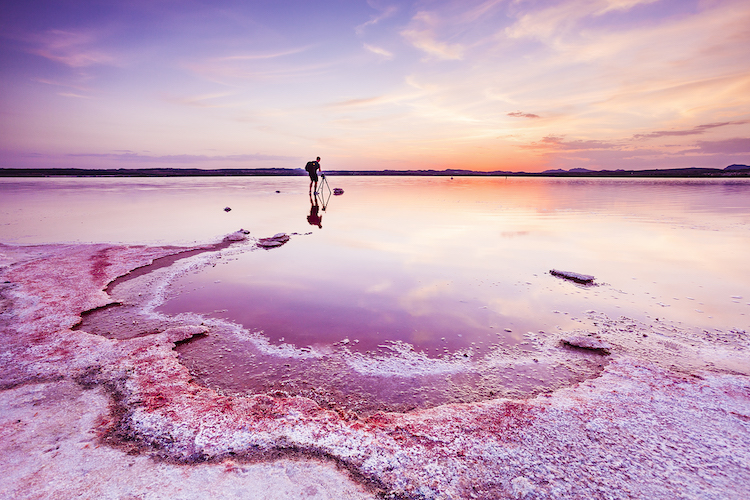Las salinas de Torrevieja (Alicante), which are located in the Parque Natural de las Lagunas de la Mata y Torrevieja, are the largest in Europe. It is a curious and extraordinary place that, nevertheless, has had a late encounter with tourism. The definitive opening of this area to tourism did not take place until July 2018. Since then, a tourist train runs through the facilities.
Every year some 600,000 tons of salt are collected in the Parque Natural de las Lagunas de La Mata y Torrevieja, in an area of 2,100 hectares (700 in La Mata and 1,400 in Torrevieja). Without a doubt, this is a true spectacle of nature converted, at present, into a little known tourist route on the Mediterranean coast.
From April to October, the train passes for an hour through the pink lake (laguna rosa) and the colossal salt mountains, as well as all the flora and fauna linked to this internationally recognised wetland.

The use of salt in the La Mata lake dates back to Roman times (1st century BC); however, there is no written source until the 13th century. In 1803, industrial exploitation began, evolving from an almost artisanal model to the present day, when these salt lakes are the first salt producer in Europe. Annual world production reaches 250 million tonnes, with China as the main reference.
Salt has many uses, although the most valuable in history has been the salting of food for consumption and conservation, and currently the chemical industry. It is also used in the thawing of roads and in water treatment. Only about 5% of salt is linked to human food. Fifty percent of the production of these salt lakes is for export, mainly to Northern Europe.
Interestingly, the pink lake (laguna rosa) has a hypnotic effect on visitors. The colour – as the guides explain – is due to the Haloarchaea, microorganisms whose membranes are purple; the Dunaliella salina, a unicellular alga that releases a pinkish pigment called carotene; and the Artemia salina, a tiny crustacean that feeds on the two previous organisms and also takes on that colour.
Last spring, during the confinement, about six hundred flamingo chicks were born. This was the first time this bird has reproduced in the laguna rosa, a fact that is believed to have been related to the limited salt extraction activity, the rain and the absence of environmental noise.



